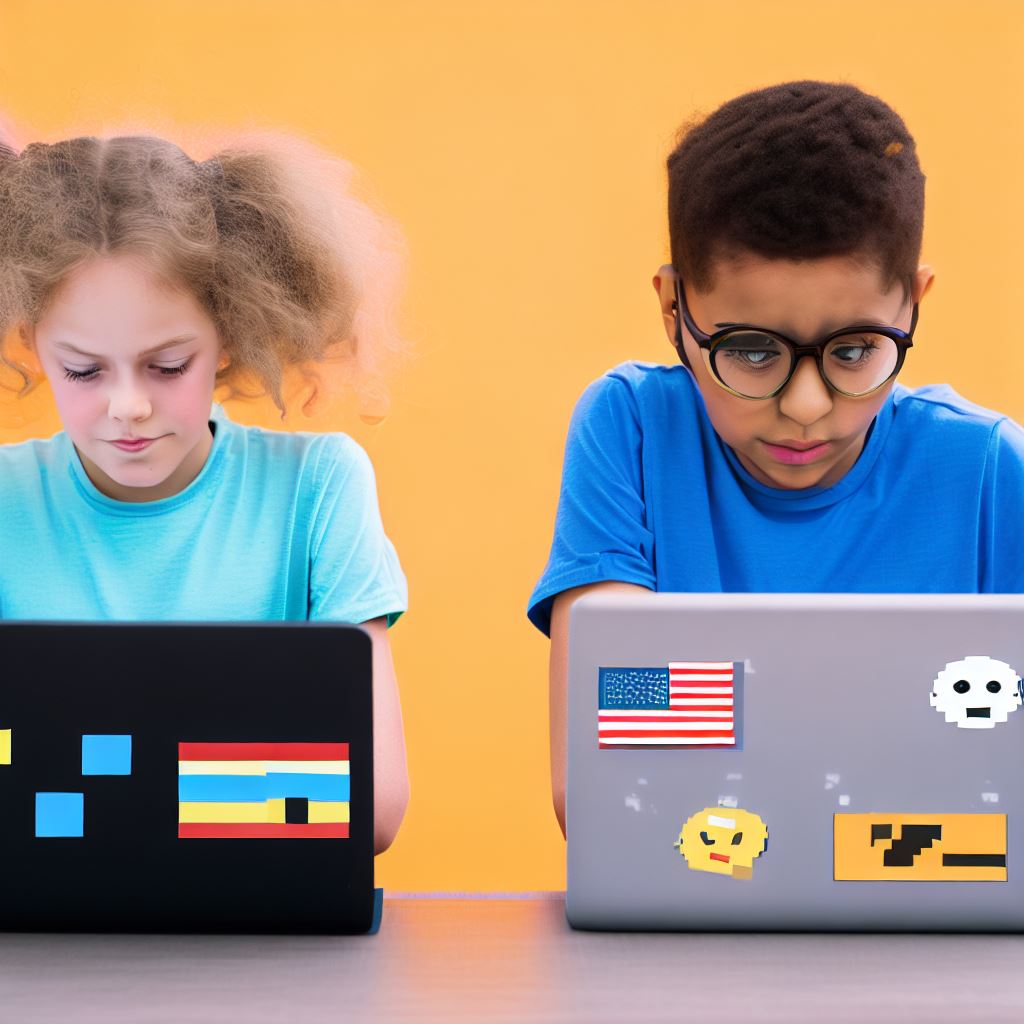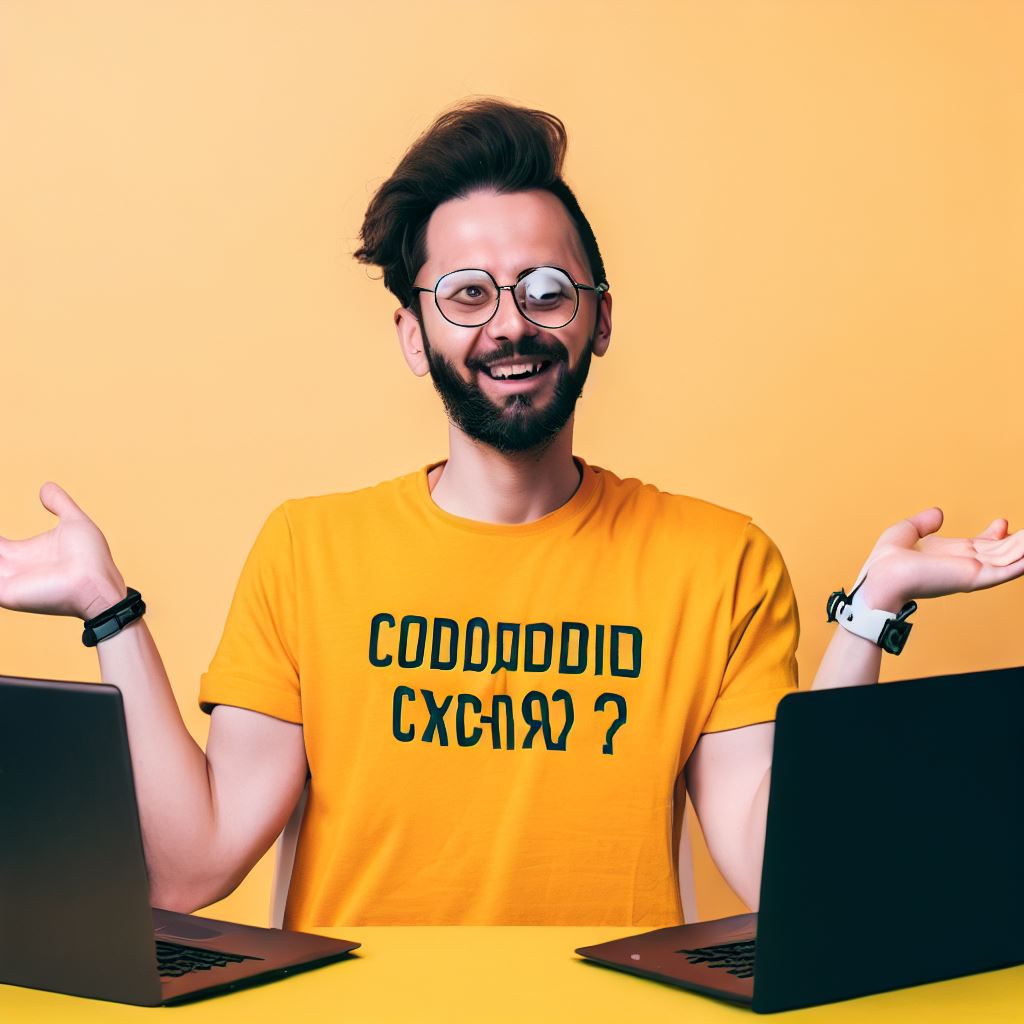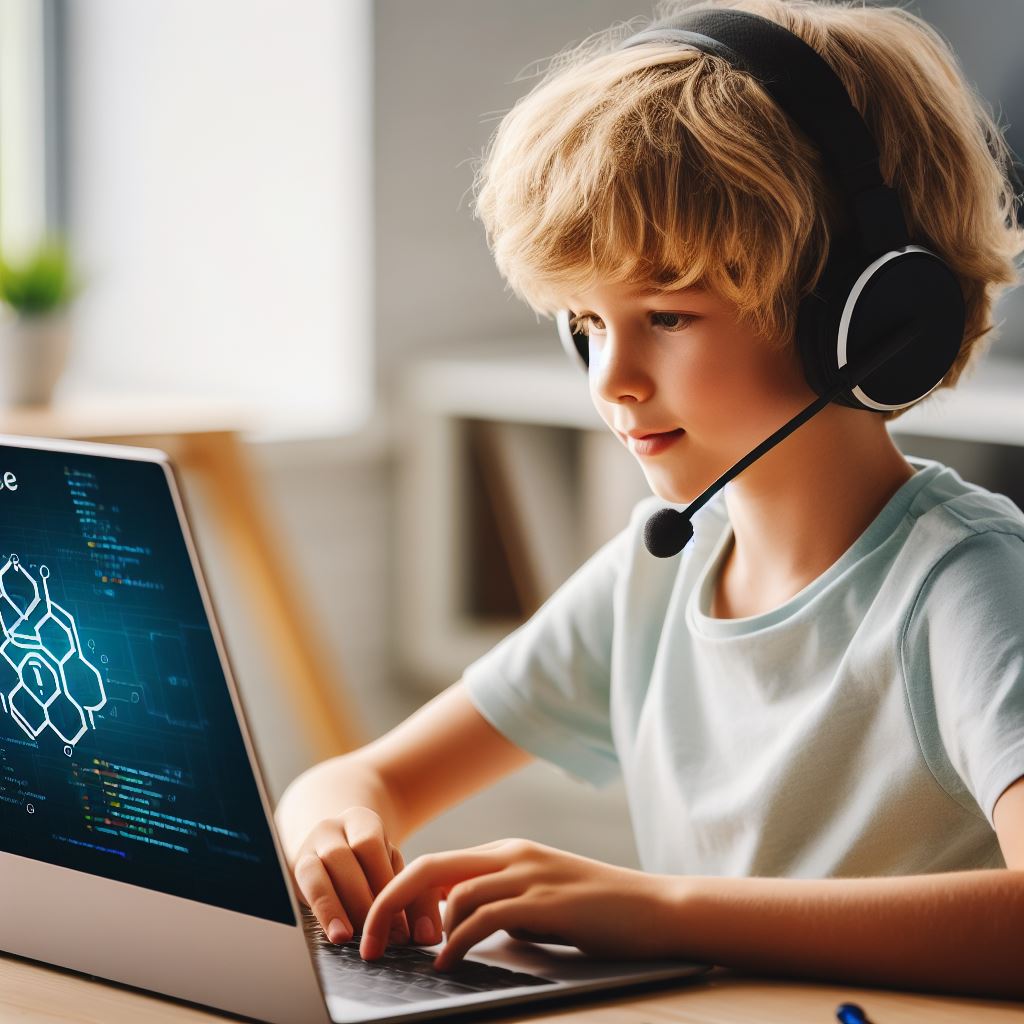Introduction
In today’s digital age, teaching kids coding skills is becoming increasingly important. It helps them develop problem-solving abilities, creativity, and logical thinking.
There are several coding platforms available for kids to learn and practice coding.
One such platform is Scratch, which is widely popular among educators and parents for its user-friendly interface and visual programming environment.
Scratch allows kids to create interactive stories, games, and animations by simply dragging and dropping colourful blocks of code.
Another platform is Code.org, which offers a variety of coding tutorials and resources for kids of all ages. It has a comprehensive curriculum and engaging activities that make learning to code enjoyable.
Tynker is another coding platform that offers interactive coding courses for kids. It features intuitive drag-and-drop coding blocks and offers a wide range of coding projects.
Swift Playgrounds is designed for older kids and introduces them to the Swift programming language used to create iOS apps. It provides an immersive learning experience and challenges kids to solve coding puzzles.
Overall, each coding platform has its own unique features and benefits. The choice ultimately depends on the child’s age, interests, and learning style.
It is important to expose kids to coding early on to help them develop essential skills for the future. Whether it’s Scratch or other platforms, the goal is to make coding accessible and enjoyable for kids.
What is Scratch?
Scratch is a visual programming language that was developed by the Lifelong Kindergarten Group at the MIT Media Lab. It provides a platform for kids to create and share interactive stories, games, and animations
Features and benefits of Scratch
1. User-friendly interface
Scratch provides a user-friendly interface that makes it easy for kids to get started with coding.
The drag-and-drop functionality allows them to create programs without the need for typing or memorizing complex syntax.
This lowers the barriers to entry and encourages kids to explore and experiment with coding.
2. Wide range of projects and applications
Moreover, Scratch offers a wide range of projects and applications that kids can create.
From simple animations and stories to more advanced games, Scratch provides a platform for their imagination and creativity to flourish.
Tech Consulting Tailored to Your Coding Journey
Get expert guidance in coding with a personalized consultation. Receive unique, actionable insights delivered in 1-3 business days.
Get StartedThey can design characters, add backgrounds, and program interactions to bring their ideas to life.
3. Community and support resources
One of the key advantages of Scratch is its vibrant and supportive online community.
Kids can share their projects and get feedback from others, which not only boosts their confidence but also helps them improve their coding skills.
They can collaborate with like-minded individuals, learn from their peers, and inspire others with their creations.
Additionally, Scratch provides a wealth of support resources to assist kids in their coding journey. There are tutorials, guides, and forums where they can find answers to their questions and learn new techniques.
Whether they are stuck on a particular problem or seeking inspiration, the Scratch community and resources are always there to help.
In general, Scratch is a fantastic tool for introducing kids to coding. Its user-friendly interface and drag-and-drop functionality make it accessible to beginners.
The wide range of projects and applications encourages creativity and experimentation.
The supportive community and extensive resources ensure that kids have the help and inspiration they need to thrive in their coding journey.
So, if you want to introduce your kids to coding, Scratch is definitely a platform worth considering.
Read: Minecraft and Scratch: A Kid-Friendly Coding Guide
Other Platforms for Kids Coding
Blockly
Description and Features of Blockly
Blockly is a visual programming language that allows kids to drag and drop blocks of code to create programs. It is similar to Scratch in terms of its block-based interface.
Comparison to Scratch
Compared to Scratch, Blockly offers a more simplified and beginner-friendly coding experience. It is perfect for younger kids who are just starting to learn coding concepts.
Advantages and Disadvantages
One advantage of Blockly is its intuitive interface, which makes it easier for kids to understand and navigate. However, it may lack some of the advanced features and community support that Scratch provides.
Build Your Vision, Perfectly Tailored
Get a custom-built website or application that matches your vision and needs. Stand out from the crowd with a solution designed just for you—professional, scalable, and seamless.
Get StartedTynker
Description and Features of Tynker
Tynker is an online coding platform that aims to teach kids how to code through fun and interactive games and activities. It provides a wide range of coding courses and challenges.
Comparison to Scratch
Tynker offers a more structured learning path compared to Scratch. It provides a curriculum that guides kids through different coding concepts and gradually increases the complexity of projects.
Advantages and Disadvantages
Tynker’s curriculum-based approach helps kids develop a solid foundation in coding. However, some kids may find it less creative and flexible compared to the open-ended nature of Scratch.
Python (with kid-friendly libraries)
Description and Features of using Python for kids
Python is a popular and widely-used programming language that can also be suitable for kids. With the use of kid-friendly libraries, Python becomes more accessible and engaging for young learners.
Comparison to Scratch
Python offers a more text-based coding experience compared to Scratch’s visual programming interface. It introduces kids to a more structured and syntax-dependent programming language.
Advantages and Disadvantages
Python allows kids to learn a powerful and versatile programming language that is widely used in real-world applications.
However, it may require a steeper learning curve compared to Scratch and other block-based platforms.
All in all, there are several other platforms available for introducing kids to coding, each with its own unique features and advantages.
Blockly offers a simplified and intuitive experience, while Tynker provides a structured learning path. Python, on the other hand, introduces kids to a real-world programming language.
Ultimately, the choice between these platforms depends on the age, interests, and learning style of the child.
Read: Getting Started with Scratch: A Beginner’s Guide to Coding

Factors to Consider when Choosing a Platform
When it comes to introducing kids to coding, it is vital to consider various factors before selecting a platform. Here are the key factors to keep in mind:
1. Age and skill level of the child
- It is crucial to choose a platform that aligns with the child’s age and skill level.
- Younger children may benefit from visual programming languages like Scratch, while older kids might explore text-based languages.
- The platform should provide appropriate challenges to engage the child without overwhelming them.
2. Learning goals and objectives
- Consider the learning goals you want to achieve through coding education.
- If the focus is on creativity and problem-solving, Scratch’s visual interface may be a better choice.
- If you aim for a more structured and in-depth understanding of programming concepts, other platforms might be more suitable.
3. Ease of use and accessibility
- Choose a platform that is user-friendly and provides accessible resources, tutorials, and support.
- Intuitive interfaces and drag-and-drop features, like Scratch, can help kids grasp programming concepts more easily.
- Consider the availability of the platform on different devices, such as desktops, tablets, or smartphones.
4. Scalability and versatility
- Consider whether the platform allows for progression and complexity as the child advances in coding skills.
- Some platforms, like Scratch, offer a wide range of projects and extensions to cater to various interests and keep kids motivated.
- Platforms with the ability to transition to text-based coding languages can provide a seamless learning experience.
5. Parental involvement and support
- Assess the level of parental involvement and support required for the chosen platform.
- Some platforms provide resources specifically designed for parents to understand and assist their child’s coding journey.
- Consider your own technological expertise and willingness to engage in coding activities together with your child.
Considering these factors will lead to a more informed decision in choosing the most appropriate platform to introduce kids to coding.
Remember, it’s crucial to create an environment that fosters their interest, curiosity, and love for coding.
Optimize Your Profile, Get Noticed
Make your resume and LinkedIn stand out to employers with a profile that highlights your technical skills and project experience. Elevate your career with a polished and professional presence.
Get NoticedRead: Scratch vs. Python: Which is Best for Young Coders?
Explore Further: Coding for Social Justice: A Guide to Impactful Projects
Case Studies: Success Stories
In this section, we will highlight specific examples of kids who started their coding journey with Scratch.
We will showcase their impressive coding projects and achievements, emphasizing how Scratch helped them develop essential coding skills.
Emma’s Interactive Story
- Emma, a 10-year-old girl, began her coding adventure with Scratch by creating an interactive story.
- Using Scratch’s block-based programming, she designed captivating characters and developed an engaging plot.
- Emma honed her logical thinking and problem-solving abilities while making her story interactive and fun.
- She incorporated variables and conditional statements to create multiple-story outcomes, enhancing her coding skills.
- Emma’s project received recognition in a local competition, boosting her confidence and motivating her to explore more coding concepts.
Jack’s Game Design
- Jack, a 12-year-old boy passionate about gaming, utilized Scratch to create his own unique game.
- Scratch’s intuitive interface empowered Jack to design interactive gameplay and engaging levels.
- He challenged himself by incorporating advanced concepts like game physics and collisions.
- Through trial and error, Jack enhanced his computational thinking by optimizing game performance.
- Jack’s game won an online competition, providing him with a sense of achievement and recognition from the coding community.
Sophia’s Animated Art
- Sophia, an artistic 8-year-old, discovered Scratch’s potential to bring her drawings to life.
- Using Scratch’s animation tools, Sophia created mesmerizing art pieces with interactive elements.
- She learned about coordinate systems, transformations, and sprite manipulation to refine her creations.
- Sophia’s artistic skills combined with coding techniques made her animations stand out.
- Her work was featured in a local art exhibition, inspiring other young artists to combine their passions with technology.
These case studies illustrate the power of Scratch in nurturing coding skills in kids. The platform’s simplicity and creativity stimulate young minds to grow their abilities in unexpected ways.
By experimenting with Scratch, children gain invaluable problem-solving, logical thinking, and creativity skills that extend far beyond coding.
Each success story exemplifies how Scratch acts as a launching pad for kids to explore their unique interests while mastering coding fundamentals.
As showcased by Emma, Jack, and Sophia, Scratch provides a solid foundation for young learners to navigate the digital landscape.
Moreover, these kids’ accomplishments serve as an inspiration to their peers. By sharing their projects and achievements, they encourage other children to embark on their coding journeys with Scratch.
Scratch’s impact on these kids goes far beyond coding skills. It instills perseverance, resilience, and confidence as they tackle challenges, overcome obstacles, and proudly present their creations.
Overall, these success stories only scratch the surface of the countless achievements made by kids introduced to coding through Scratch.
As we move forward, we will explore other platforms and tools to provide a comprehensive comparison and guide for parents, educators, and young learners.
Read: Why Scratch is the Perfect Intro to the World of Coding
Conclusion
To conclude, introducing kids to coding is a crucial step in preparing them for the future. In this blog post, we discussed the advantages of using Scratch as a coding platform for kids.
By offering an interactive and user-friendly interface, Scratch allows children to learn and practice coding skills in a fun and engaging way. It promotes creativity, problem-solving, and logical thinking.
However, it is important to note that there are other coding platforms available that may be better suited for certain individuals or specific learning objectives.
Parents and educators should explore these different options to find the right fit for their children.
Choosing the right coding platform for kids is essential in providing them with the best learning experience. It can make a significant difference in their motivation and overall success in coding.
In conclusion, while Scratch is a fantastic tool to introduce kids to coding, it is just one of many options.
By exploring different platforms, parents and educators can ensure that kids have a well-rounded exposure to programming concepts and develop a deeper understanding of coding principles.
Regardless of the platform chosen, the most important aspect is to foster a love for coding and the ability to think critically and problem-solve. This will pave the way for a bright future in the digital era.




